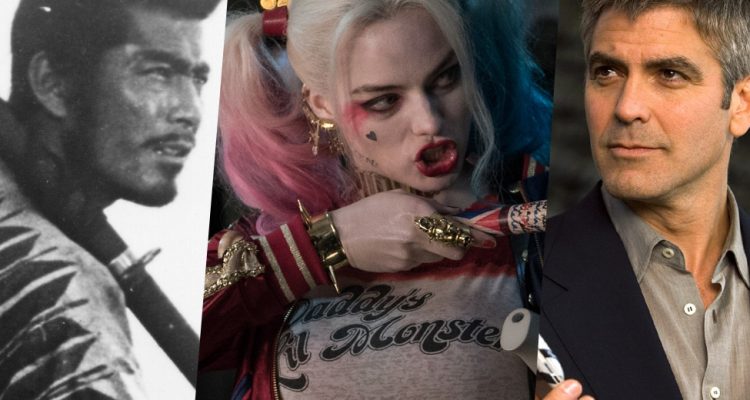
“The Monster Squad” (1987)
For better and for worse, “The Monster Squad” arrived thirty years too early: its pop-culture mash-up concept is a precursor to the blockbusters of today in so many ways (not least because of 80s-homaging stories like “Stranger Things”). In fact, it’s much more charming than most of these, even if it’s decidedly an imperfect film. Written by Shane Black and Fred Dekker, and directed by Dekker, the film actually pits two squads against each other, with a group of horror-loving suburban pre-teens forced to battle Count Dracula and a team of beasts including The Mummy, The Wolf Man, Frankenstein’s Monster and The Gill-Man. It’s a bit uneven (it’s unclear who exactly the film is actually for), is sometimes a bit contrived, and the acting mostly isn’t brilliant, though Tom Noonan’s legitimately moving as Frankenstein’s Monster. But it’s got bucketloads of charm, does the Amblin in-house style better than many Amblin movies, and is so clearly in love with its subject matter that it feels positively infectious. Catch up on it now before the inevitable remake gets made.

“Play Dirty” (1969)
One of a string of “Dirty Dozen” knock-offs, “Play Dirty” is actually a real gem, one that overcame a troubled production (supposed co-star Richard Harris never turned up for work, and original director Rene Clement was fired early into production) to become a complex and subversive film. Based loosely on events in the North African front during WW2, the film focuses on Michael Caine‘s Capt. Douglas, an oil company worker with an honorary military commission who, despite his lack of combat experience, is ordered by the harried Col. Masters (Nigel Green) to lead a team 400 miles behind enemy lines to blow up a fuel depot. And that unit is a pretty rum bunch: a convicted insurance fraudster Capt. Leech (Nigel Davenport), a Greek drug smuggler, a Tunisian rapist, and two gay Senussi tribesmen. It’s an enormously enjoyable film, with a wry, sarcastic humor and some cracking wordless action sequences from “House Of Wax” director André de Toth, but what makes it most memorable is its firm anti-war stance, a noticeable break from its contemporaries, up to and including its bleak conclusion.

“Near Dark” (1987)
Kathryn Bigelow‘s grungily compelling cult movie is a hybrid of vampire movie, western and biker gang chic made nearly a decade before Robert Rodriguez and Quentin Tarantino would mash those genres up in the flashier, emptier “From Dusk Till Dawn.” One of the ways in which the earlier film is superior is that, amid the bloodletting and stylized violence, and Bill Paxton‘s crazed delivery of “It’s finger lickin’ good!” it’s actually about something: the tribalist seduction of belonging to a “pack.” Adrian Pasdar plays the farmboy who is turned vampire by Jenny Wright‘s bloodsucking drifter. He must overcome his squeamishness at killing (and at having his own little sister similarly turned) if he wants to run with his new “family” (played with ghoulish relish by Paxton, Lance Henriksen and little boy vampire Joshua John Miller). It’s a violent, gorily great-looking horror, and even at its most moralistic, you can see the no-holds-barred attraction of being one of the unrepentant undead.

“The Muppets” (2011)
Part of the fun of a ‘squad’ movie is the recruiting of the gang, or, in some cases, getting them back together, and few recent movies have done that with the effectiveness of Nicholas Stoller and Jason Segel’s charming “Muppets” reboot. Whether you grew up with the 1970s originals or the 1990s ‘Christmas Carol’ and TV revival, many viewers had long associations with Jim Henson’s felt figures, and the James Bobin-directed film plays directly into that, with Segel and his Muppet pal spending much of the film reuniting the old characters, who’ve long since splintered off and are now mostly in a sort of unhappy middle age. The appeal of Kermit, Fozzie Bear, Miss Piggy and co was always in their position as a group rather than individual characters, and the team behind the surprisingly moving relaunch understood that, perhaps better than any other Muppet movie before, when creating the bones of the film.

“The Italian Job” (1969)
In a way it’s a shame that the idiosyncratic pleasures of Peter Collinson’s cronky British caper film tend to be reduced to Michael Caine‘s “You were only supposed to blow the bloody doors off!” and its literal cliffhanger ending, as there is a lot more breadth to it, if not necessarily a lot more depth. The Mini Coopers trundling through a traffic-snarled Turin are iconic, of course, but so to a lesser extent are the ragtag bunch assembled by Caine’s cockney criminal and masterminded by Bridger (the invaluable Noel Coward) for whom incarceration seems to be no impediment. Benny Hill, Robert Powell and Harry Baird are among the better known members of the ensemble, but the wider conspiracy is much bigger than that, comprising drivers and mafiosi and prison guards alike, which is part of what makes it such frothy fun — the whole plan seems like a colossal game that almost everyone’s in on.

